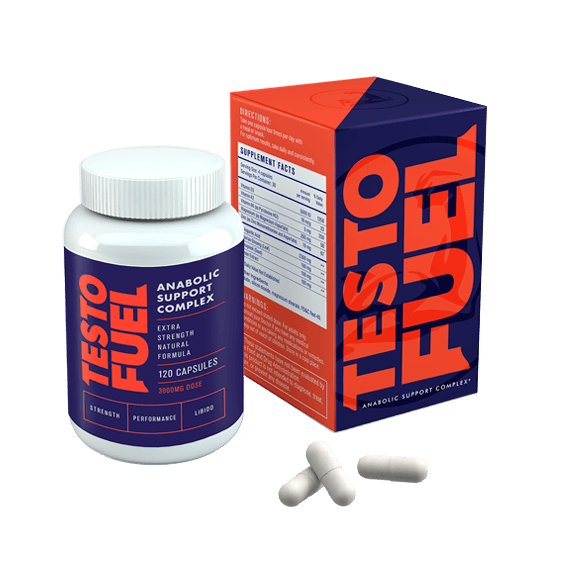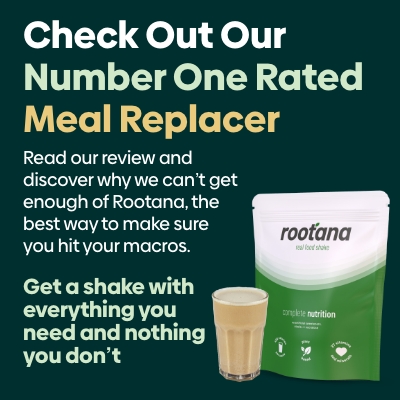Weight Loss Workout Plan for Men
If weight loss is the goal, you’re in the right place. It’s time to lose the fat for good with this time-efficient, fat-blasting workout plan.
Once upon a time you were the epitome of health.
Your broad shoulders and thick arms showcased your raw power, and your toned abs told a story of someone that watched their diet and led an active lifestyle.
But as the years passed, you let it slide.
The physique you were once proud of was slowly replaced by a less athletic and certainly heavier body. The arms and the abs are a distant memory.
Hey, there’s no need to feel guilty. It happens to the best of us.
The biggest thing is that you’re here because you want to change all that. You’re ready to make a difference and lose the weight that’s crept on. And this workout guide guarantees that.
Let’s get on this!
What does this program cover?
| Goal: | Fat loss, muscle conditioning |
| Aimed at: | Beginner men |
| Program duration: | 6-8 weeks |
| Workout duration: | 45-60 minutes |
| Equipment needed: | Barbell, dumbbell, resistance machines |
Weight Loss Basics: Here’s What You Need to Know
Our aim is to keep this article as light and easy-to-read as possible. We’ve avoided all of the scientific jargon and kept things straight down the middle. Our view is that the easier it is to understand, the easier it’ll be to implement.
Ultimately you’re here because you want to lose weight and improve the way you look. It’s not our job to confuse you with long words or overly-complicated fitness programs.
If you learn things along the way then great – that’ll make your journey so much easier.
But we understand that you aren’t here because you want to walk away with a degree in human dietetics or strength and conditioning. Just to get jacked.
In the following sections we’ve covered the absolute essentials of what you need to know. Follow these are results are guaranteed to both look and feel better..
It’s that simple.
The bottom line is that calories matter
Each time you eat carbs, fat or protein your body absorbs them and takes the energy it needs to help your body function.
We call this energy input.
It doesn’t matter whether it’s from a sandwich, a pizza, a salad or a chicken breast – your body takes all of the energy it can from it (obviously some foods have more calories than others).
It uses this incoming energy to nourish your internal organs, feed your muscles and make sure you’ve got enough ‘get up and go’ to complete daily activities and movements.
And just as you can get energy from different sources, you burn off energy in various ways too. This is called energy expenditure.
- Basal metabolism – the energy you need each day just to help your heart beat, your brain to function and your muscles to maintain their size and shape.
- Exercise – when you hit the gym, go for a run, or take part in sports, you burn calories
- Non-exercise activity – if you walk, fidget, do housework or any other general movements, you are still using energy.
- Digestion and absorption – when you eat food your body needs energy to break it down and help you absorb it.
Weight loss and gain are a matter of balance
When it comes to body weight, the number one factor in whether you succeed or not is energy balance.
Imagine a pair of weighing scales.
On one side you have energy input. And on the other you have expenditure.
When you eat more than your body can burn off you fall into what’s called an energy surplus. Your body takes what it needs and stores the excess as fat in your fat cells. The result is that one side of the scale moves and of course the result is weight gain.
If your input and expenditure are equal then nothing will happen. You’ll find that some days your weight goes up slightly, and on others it goes down – but all-in-all the scales are balanced and your weight remains the same.
The magic happens though when the energy expenditure side of scale becomes more dominant.
When you’re burning off more energy than goes into your body you signal those fat cells to open up and release their stored energy. And the result is a decrease in body fat.
Note: If you want to know how to calculate your calories you can use our calorie calculator at the bottom of this article.
- Key Point: You’ll only lose body fat if you are in a calorie deficit.
Strength Training for Weight Loss: What’s the Connection?
Once you’ve sorted your calorie intake out, you need to start thinking about exercise.
Now here’s the thing – if you’re in a calorie deficit you’ll lose weight and fat regardless of whether you hit the gym or not. So by that rationale, exercise isn’t essential.
But before the thought of skipping the fitness sessions excites you – bare this in mind.
Every time you diet and don’t stimulate your muscles you’ll lose lean tissue. And that means a decrease in metabolic rate over time.
Strength training compliments your calorie deficit
When you’re low on energy your body does all it can to find some extra energy from somewhere. And that somewhere is the energy stored in your body.
Like we’ve already said, your fat cells release some energy and that results in fat loss.
But if you’re not careful your body can also turn to muscle cells for energy too by breaking down the proteins in your muscle tissue and converting them into usable energy.
Remember though, muscle tissue is metabolic, and a large part of basal metabolism (the part of energy expenditure we talked about earlier) comes from muscle.
That means when you decrease the amount of muscle you have, your ability to burn calories also decreases, making fat loss much harder.
How can you prevent your body breaking down muscle?
Strength training.
Weight training can speed up fat loss
Strength training is tough. But it’s fantastic for weight loss.
Lifting weights to fatigue using large muscle groups uses a lot of calories, simply because of how intense it is.
Okay, granted, it doesn’t burn as much energy as what cardio might do on a minute-by-minute basis – but cardio won’t preserve muscle mass like lifting weights will.
Not only does strength training burn calories during exercise, it also continues to use up stored energy afterwards too – by a process called excess post-exercise oxygen consumption (EPOC).
So when you hit the gym hard for an intense weights session you’ll increase your metabolic rate for a good 24-48 hours after your last set [1].
That’s pretty effective for keeping that fat burning stimulus going.
Key Point: The less muscle you have, the lower your metabolism will be. Strength training preserves lean mass while in a calorie deficit.
Use High Intensity Interval Training to Speed up Results
Strength training isn’t your only weapon in the weight loss war.
High-intensity interval training (HIIT) is becoming increasingly popular as a fat loss training protocol.
In case you’ve not heard of it, this time-efficient method of weight loss uses short periods of all-out intensity followed by recovery periods.
It can be done in a park, on a treadmill, using a bike or even on a rowing machine. You can also integrate it into resistance-based circuit workouts too.
As long as the intensity is there it doesn’t really matter.
How does HIIT support your weight loss goals?
Take a look at the research into high-intensity cardio and fat loss and you’ll see a clear relationship between these two variables.
Review studies show that HIIT boosts weight loss and improves body composition in the following ways [2]:
- Increases both aerobic and anaerobic fitness
- Burns a high number of calories
- Lowers insulin resistance
- Enhances fat oxidation and glucose tolerance
- Improved health markers (cholesterol, heart disease etc.)
Not only that, HIIT has also been shown to provide a potent EPOC effect, just like strength training [3].
Using a double-barreled approach by combining weight lifting and HIIT just doesn’t give your fat a chance.
Key Point: High-intensity interval training ramps up calorie burn and boosts fat oxidation in a time-efficient way.
The Workout
We’ve kept this workout simple by focusing on the basics – the stuff that guarantees results because it works.
You’ll be performing a 4-day workout week, split into cardio and strength sessions.
We suggest that you follow this plan for around 6-8 weeks before you’ll need to take a week off to recover.
Although each session will differ in length based on individual rest times, how busy your gym is and so on, it shouldn’t take you any longer than 60 minutes to get the job done.
That way, the gym doesn’t take over you life or become unmanageable.
Program content: strength and high intensity interval training
On two workouts you’ll be focusing solely on weights.
You’ll be covering all of your major muscle groups with 3 sets of 8-15 reps. The idea is to choose weights that really challenge you – if you can do more than 15 it’s too light.
The core of the exercises are classed as compound lifts.
This simply means they work more than one muscle group, making your workout more time-efficient.
But to make sure you get plenty of rest and recovery between training each muscle we’ll be staggering each exercise so that you move from one muscle group to the next in a circuit fashion. For example, you’ll do 3 sets on chest and then 3 on legs rather than another exercise for chest.
On HIIT days we’ve reduced the amount of weight training you do. We’ve also taken the lower body work out because your legs will already be stimulated with the HIIT work.
These are your cardio days… and they are hard!
To an extent you can choose which cardio equipment you use for your workouts. If you prefer the rower over the bike then that’s fair enough.
All we ask is that you vary it each week and stick to cardio machine HIIT rather than integrating resistance training into the mix (a type of training called high intensity resistance training).
HIIT works well for you as a beginner, but is still really challenging.
Day 1: Full body strength
| Exercise | Reps | Sets | Rest Period |
|---|---|---|---|
| Leg Press | 8-12 | 3 | 2-3 minutes |
| DB Bench press | 8-12 | 3 | 2-3 minutes |
| Lying/Seated leg curl | 8-12 | 3 | 2-3 minutes |
| Seated row | 8-12 | 3 | 2-3 minutes |
| Leg extension | 8-12 | 3 | 2-3 minutes |
| Standing calf raise | 8-12 | 3 | 2-3 minutes |
Day 2: Upper body and HIIT
| Exercise | Reps | Sets | Rest Period |
|---|---|---|---|
| Lateral raise | 10-15 | 3 | 2-3 minutes |
| DB flyes | 10-15 | 3 | 2-3 minutes |
| DB narrow press | 10-15 | 3 | 2-3 minutes |
| Barbell bicep curl | 10-15 | 3 | 2-3 minutes |
Day 3: Full body strength
| Exercise | Reps | Sets | Rest Period |
|---|---|---|---|
| DB Deadlift | 8-12 | 3 | 2-3 minutes |
| Pulldown | 8-12 | 3 | 2-3 minutes |
| DB Step-ups | 8-12 | 3 | 2-3 minutes |
| DB Shoulder press | 8-12 | 3 | 2-3 minutes |
| Seated calf raise | 8-12 | 3 | 2-3 minutes |
| Split squat | 6-10 per side | 3 | 2-3 minutes |
Day 4: Upper body and HIIT
| Exercise | Reps | Sets | Rest Period |
|---|---|---|---|
| Reverse flyes | 10-15 | 3 | 2-3 minutes |
| DB hammer curl | 10-15 | 3 | 2-3 minutes |
| Rope triceps extension | 10-15 | 3 | 2-3 minutes |
| DB Single arm row | 10-15 | 3 | 2-3 minutes |
Calorie calculator
To achieve a calorie deficit you need to use the calculator below to work out your maintenance energy allowance by inputting your weight, age, height and activity level.
From there, all you need to do is take around 20% off that number and that’s how many calories you should consume in a deficit.
References
- Speakman, JR et al. Physical activity and resting metabolic rate. Proceedings of the Nutrition Society. 2003; 62: 621-634
- Boutcher, SH. High-intensity intermittent exercise and fat loss. J Obes. 2011
- Paoli, A et al. High-intensity interval resistance training (HIRT) influences resting energy expenditure and respiratory ratio in non-dieting individuals. J Transl Med. 2012; 10: 237



